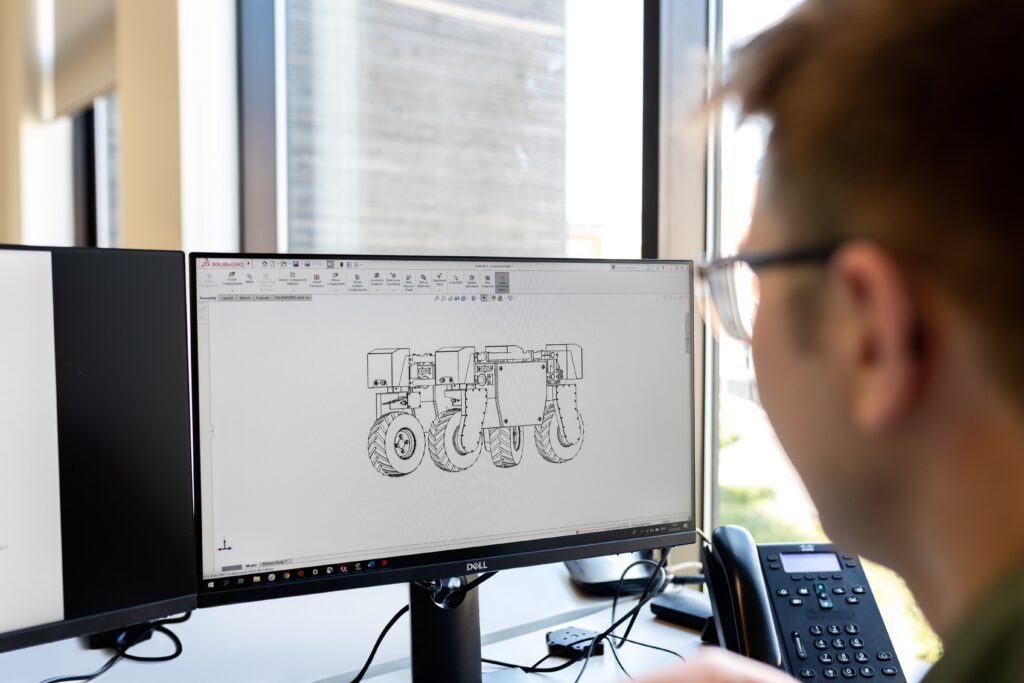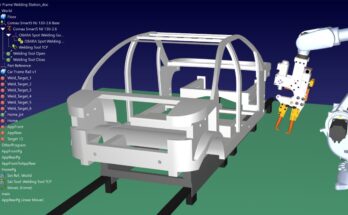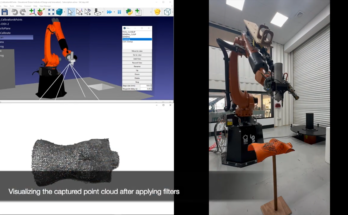How can you decide which robot simulator is the best for your needs?
Are all simulators the same? Or are some better than others?
Here’s a no-nonsense guide to choosing the right robot simulator for you.
If you’re considering a robot simulator, you have probably realized by now that there are many options to choose from.
Robot manufacturers often have their own simulator that only works with their brand of robot. Then, there are a dizzying array of 3rd-party robot simulators, many of which look quite similar. On top of this, there are a mismatched bunch of free simulators, some of which have large userbases but look excruciatingly complex to use.
And you have to choose the best one for your industrial application!?
You might be wondering if it’s even a good idea for you to invest in a robot simulator. With so many options out there, the chance of making a costly mistake might seem rather high.
In this challenging situation, robot users often make a mistake.
The Mistake People Make When Choosing a Simulator
With such a huge number of options, people often jump to making one of the following decisions about which robot simulator to choose:
- They decide to give up on using a robot simulator at all.
- They just go with the simulator provided by their robot’s manufacturer.
Neither of these reactions is the best for the needs of your business.
Sure, if you don’t actually need to simulate your application, the first option could be suitable. However, there are various benefits of simulation and offline programming that you would miss out on by choosing this option.
The second reaction — going with the manufacturer’s simulator — is probably the biggest mistake that people make. Sometimes people get lucky and these simulators are okay for their needs, but often they are left trying to do the simulation equivalent of trying to fit a square peg in a round hole.
Common problems with simulators from robot manufacturers are:
- They are incompatible with other robot brands. This heavily ties you into only using that robot brand.
- They are often surprisingly costly. Despite being an “add-on” to the robot, they often cost more than 3rd-party simulators with more features.
- They only support the manufacturer’s programming language so aren’t flexible.
- Their features vary wildly and are often lacking in some areas. It’s a lottery how good a particular manufacturer’s simulator will be. If your chosen brand’s simulator doesn’t provide a feature that you need, you’re stuck.
By choosing the manufacturer’s simulator, you are tied into only one option. If it turns out that their simulator doesn’t suit your needs, there will be very little you can do about it.
Programming will be complex, time-consuming, and costly as a result.

The Smarter Way to Choose a Robot Simulator
So, how should you choose a robot simulator?
What steps can you take to ensure that you end up with a simulator that truly suits your needs?
Choosing a robot simulator is a similar process to choosing any software for your business. You first need to take a step back and look at your business needs to determine what criteria you will use to assess the different simulators.
The days have passed where only one piece of software was considered the “industry standard” for everything. These days, you can choose whichever software is best suited to your particular situation.
Let’s have a look at some considerations that you can take to ensure you are picking the robot simulator that will make your life easier and not harder.
10 Important Considerations When Choosing a Robot Simulator
Here are 10 important considerations you should make before you decide on a robot simulator:
1. Start By Assessing Your Business Needs
Not every robot simulator will be suitable for everyone. Before you dive into looking at the different options available, you should get clear on how you will assess the suitability of each simulator you consider.
How easy do you want the simulator to be to get up and running? Some simulators are easier to use than others.
2. Do Research Into the Options
It’s usually a good idea to look at various software options before making a choice.
In particular, look out for those simulators that include features that you will need for your applications and those which support a variety of robot brands.
Compare each simulator using the criteria you identified in your assessment.
3. Look for Customization Options
Unless your application is very simple, it’s likely that you will want to customize the robot setup within your simulation, even if just a little. Some simulators make customization very simple whilst others make it very complex.
Find a simulator that supports customization. It’s likely to support many programming languages and be extended easily with plugins.

4. Be Wary of Free Simulators
There are a bunch of free robot simulators available out there. Some of these are quite powerful and have dedicated userbases.
However, be warned. Most free robot simulators are not suitable for industrial applications. They tend to have a steep learning curve, provide little support, and can be unstable.
For example, a lot of people will recommend ROS when you ask about robot simulators. To be clear, ROS is not actually a simulator, it’s a robot middleware. But, the Gazebo simulator that comes with it is complex to use and requires a steep learning curve compared to more industry-focused simulators.
5. Focus on Applications
A good way to ensure your simulator will be easy to use and suit your purposes is to focus on the applications that are supported “out of the box” by the simulator. Some simulators have a set of supported applications that are made easier to program with dedicated tools or wizards.
For example, if you are doing robot machining, palletizing, or anyone of the dozens of common robot applications, pick a simulator that has a track record with your chosen application.
6. Ask for Help from the Community
Utilize the power of community to help you to make your decision and get your robot simulation up and running as quickly and easily as possible.
A good place to start is to sign up to a robotics forum, e.g. the RoboDK Forum or the Robot-Forum.
7. Think Long Term
One of the classic problems with manufacturer simulators is that they tie you into a particular robot brand, potentially forever. In the short term — when you are starting out and have maybe only one or two robots — this is not a problem. However, over time it can become very restrictive.
Different robot brands are better suited to some tasks over others. For example, some brands have better solutions for painting robots while others have more palletizing options.
To take advantage of the long term view, pick a simulator that is compatible with many robot brands, not just one.
8. Make It As Easy As Possible
Creating your simulation should be as easy as possible. You don’t want to have to spend hours, days, or weeks learning how to use the simulator before you can do anything with it.
A good robot simulator should have you up and running in a matter of minutes.
9. Do a “Test Drive” Before Committing
The great thing about software is that you can test it out before you commit to purchasing it… or, at least, you should be able to. Not all simulators allow you to “test drive” the fully-fledged software before you take the leap.
Make sure you pick a simulator that has a free trial of the full software.
10. Use Your Simulation for Offline Programming
The most useful feature of a good robot simulator is if it allows you to perform offline programming using the simulation. However, not all simulators have this capability.
Offline programming allows you to program the robot within the simulation and then download the resulting robot program directly to the physical robot. It reduces downtime, helps to eliminate programming errors, and provides a great way to test out new ideas without requiring access to the physical robot.
What to Do Now to Find the Best Robot Simulator for You
Now that you know what you should be looking for in a robot simulator, the only thing you need to do is get started with your research!
A good place to start might be to download a free trial copy of RoboDK and give it a try.
What are you looking for in a robot simulator? Tell us in the comments below or join the discussion on LinkedIn, Twitter, Facebook, Instagram, or in the RoboDK Forum.




